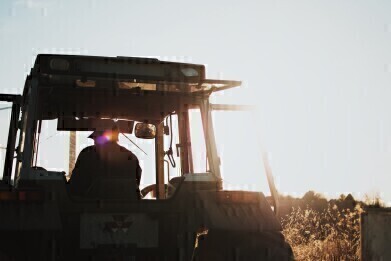Business News
Is Agricultural Pollution Getting Worse?
Jan 04 2023
Agriculture is undoubtedly key to the survival of the human race. With a ballooning global population, more sophisticated methods of farming (supplemented by scientific and technological breakthroughs) have helped us produce more crops with fewer pests and less effort. However, the pollution that has come as a by-product of this agricultural activity cannot be ignored.
Despite the fact that COP27 on climate change and COP15 on biodiversity have only recently taken place, the contamination being produced from agriculture does not seem to be improving at the pace required. With a variety of different types, sources and effects of agricultural pollution, it’s going to be a monumental challenge to bring this damaging practice to heel. Here’s a quick rundown of how we are progressing at the moment.
Greenhouse gas emissions
Agriculture is a chief source of greenhouse gases (GHGs) in the UK and beyond; domestically, it accounts for around 10% of all emissions. In 2008, the Climate Change Act introduced a legally binding target of reducing agricultural GHG emissions by 80% by 2050 compared to 1990 levels. In 2020, the goal was to release 5.2 million tonnes of carbon equivalent, but that target was missed significantly; only about a third of the targeted reductions were achieved.
Alongside the methane produced by livestock and dairy farming, the emission of nitrous oxide from agricultural land and the carbon spouted from the exhaust pipes of tractors, combine harvesters and other machinery are the main culprits behind this missed target.
Deforestation
In 2014, almost 200 governments and corporations from around the globe signed up to the New York Declaration on Forests, which aimed to halve deforestation by 2020 and stop it completely by 2030. However, five years after those objectives were announced, the rate of deforestation had accelerated by 40%, with clearing the land for sowing crops the biggest reason behind the rise.
In 2021, COP26 saw a breakthrough when 141 nations signed up to the Glasgow Leaders’ Declaration on Forest and Land Use, which also pledged to bring deforestation to an end by 2030. Crucially, those signatories represented 85% of the planet’s forests, including the biggest culprit in terms of deforestation, Brazil. Despite that encouraging news, little progress was made at last year’s COP27 and a huge effort will be needed as a matter of urgency if we are to meet those goals.
Fertiliser use
Another significant cause of agricultural pollution is the use of fertilisers. Global consumption of these chemical products has risen by almost four times in the last 50 years; in 1965, 46.31 million metric tonnes of the stuff were consumed. By 2019, that figure had risen to 190.81 million metric tonnes.
While it should be noted that fertiliser consumption has largely plateaued in the last five years, and that the use of these chemicals is absolutely crucial to generating enough produce to feed the world’s population, more can be done to curb the harmful effects of its application. This includes employing precision agriculture, rotating crops and the widespread adoption of buffer plants at the fringes of fields to prevent agricultural runoff from contaminating nearby bodies of water.
Digital Edition
AET 28.2 April/May 2024
May 2024
Business News - Teledyne Marine expands with the acquisition of Valeport - Signal partners with gas analysis experts in Korea Air Monitoring - Continuous Fine Particulate Emission Monitor...
View all digital editions
Events
Jul 30 2024 Jakarta, Indonesia
China Energy Summit & Exhibition
Jul 31 2024 Beijing, China
2024 Beijing International Coal & Mining Exhibition
Aug 07 2024 Beijing, China
IWA World Water Congress & Exhibition
Aug 11 2024 Toronto, Canada
Aug 25 2024 Stockholm, Sweden and online










.jpg)








